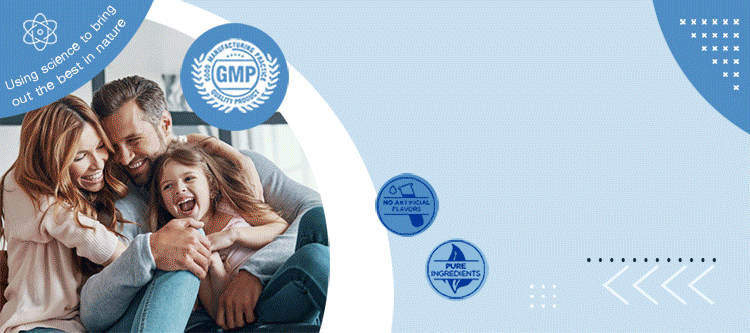สารสกัดชาเขียว 
.png) |
Green Tea
Green tea may be helpful to improve cognitive performance as well as to treat stomach disorders, vomiting, diarrhea and headaches. It is used as a diuretic and in combination products for weight loss. Green tea may be beneficial in solid tumor cancers and to reduce the risk of breast cancer, prostate cancer, colon cancer and gastric cancer. It may be beneficial to maintain remission in people with Crohn's disease, to prevent Parkinson's disease and to protect against heart disease, dental caries and kidney stones.
Green tea is also used to prevent skin damage and cancer related to ultraviolet (UV) radiation (e.g. sunburn) and other environmental causes. Green tea is different than black teas because it is not fermented. Polyphenols such as gallic acid and catechins such as epigallocatechin gallate (EGCG), epigallocatechin (EGC), epicatechin gallate (ECG) and epicatechin (EC), are abundant in green tea and are thought to be responsible for many of its proposed benefits.
Green tea also contains 2-4% caffeine or 10-80mg caffeine per cup. The caffeine in green tea acts as a central nervous system (CNS) stimulant; increases blood pressure, heart rate and contractility; inhibits platelet aggregation; stimulates gastric acid secretion; and causes diuresis. Caffeine content is also thought to be responsible for green tea's ability to improve cognitive performance.
Some preliminary studies show that flavonoids found in green tea might reduce lipoprotein oxidation. In vitro tests indicate that catechins in green tea reduce proliferation of vascular smooth muscle that occurs with high concentrations of low-density lipoproteins (LDL). There is some evidence that an unidentified compound in green tea and caffeine suppresses thromboxane formation during blood clotting by inhibiting the release of arachidonic acid from platelets. However, when used in humans green tea does not consistently exhibit useful effects on cardiovascular risk factors.
It is unclear exactly how green tea might reduce the risk of some cancers, but preliminary research suggests EGCG might prevent new blood vessel growth (angiogenesis) in tumors or inhibit tumor cell proliferation, causing cell cycle arrest or apoptosis. Green tea may also reduce oxidative DNA damage, lipid peroxidation and free radical generation, and might reduce mutagenic activity in smokers. Green tea is thought to be beneficial for preventing skin damage and cancer from ultraviolet (UV) radiation due to the antioxidant effects of polyphenols in green tea.
Green tea is also used for weight loss. Early evidence indicates that a green tea extract rich in EGCG can increase calorie and fat metabolism. Research has shown that green tea reduces the risk of developing stomach cancer by 50% and esophageal cancer by 6%
Published Clinical Studies
References
- The Review of Natural Products by Facts and Comparisons. St. Louis, MO: Wolters Kluwer Co., 1999.
- Foster S, Tyler VE. Tyler's Honest Herbal: A Sensible Guide to the Use of Herbs and Related Remedies. 3rd ed., Binghamton, NY: Haworth Herbal Press, 1993.
- Kubota K, et al. [Effect of green tea on iron absorption in elderly patients with iron deficiency anemia]. [Article in Japanese] Nippon Ronen Igakkai Zasshi 1990;27(5):555-8.
- Mester R, Toren P, Mizrachi I, et al. Caffeine withdrawal increases lithium blood levels. Biol Psychiatry 1995;37:348-50.
- Healy DP, Polk RE, Kanawati L, et al. Interaction between oral ciprofloxacin and caffeine in normal volunteers. Antimicrob Agents Chemother 1989;33:474-8.
- Carbo M, Segura J, De la Torre R, et al. Effect of quinolones on caffeine disposition. Clin Pharmacol Ther 1989;45:234-40.
- Harder S, Fuhr U, Staib AH, Wolff T. Ciprofloxacin-caffeine: a drug interaction established using in vivo and in vitro investigations. Am J Med 1989;87:89S-91S.
- Foster S, Duke JA. Eastern/Central Medicinal Plants. New York, NY: Houghton Mifflin Co., 1990.
- Hardman JG, Limbird LL, Molinoff PB, eds. Goodman and Gillman's The Pharmacological Basis of Therapeutics, 9th ed. New York, NY: McGraw-Hill, 1996.
- Tyler VE. Herbs of Choice. Binghamton, NY: Pharmaceutical Products Press, 1994.
- Hertog MGL, Sweetnam PM, Fehily AM, et al. Antioxidant flavonols and ischemic heart disease in a Welsh population of men: the Caerphilly Study. Am J Clin Nutr 1997;65:1489-94.
- Jefferson JW. Lithium tremor and caffeine intake: two cases of drinking less and shaking more. J Clin Psychiatry 1988;49:72-3.
- Sklar S. et al. Drug therapy screening system. Indianapolis, IN: First Data Bank 99.1-99. 2 eds.
- Brinker F. Herb Contraindications and Drug Interactions. 2nd ed. Sandy, OR: Eclectic Medical Publications, 1998.
- Gennaro A. Remington: The Science and Practice of Pharmacy. 19th ed. Lippincott: Williams & Wilkins, 1996.
- McKevoy GK, ed. AHFS Drug Information. Bethesda, MD: American Society of Health-System Pharmacists, 1998.
- Micromedex Healthcare Series. Englewood, CO: MICROMEDEX Inc.
- McGuffin M, et al, ed. American Herbal Products Association's Botanical Safety Handbook. Boca Raton, FL: CRC Press, 1997.
- Schulz V, Hansel R, Tyler VE. Rational Phytotherapy: A Physician's Guide to Herbal Medicine. Terry C. Telger, transl. 3rd ed. Berlin, GER: Springer, 1998.
- Holt GA. Food & Possible Interactions with Drugs: Revised and Expanded Ed. Chicago, IL: Precept Press, 1998.
|
|

 Multiple effects of green tea
Multiple effects of green tea  Cancer prevention by tea polyphenols
Cancer prevention by tea polyphenols  Radiation induced-tubulogenesis
Radiation induced-tubulogenesis 
 Multiple effects of green tea
Multiple effects of green tea  Cancer prevention by tea polyphenols
Cancer prevention by tea polyphenols  Radiation induced-tubulogenesis
Radiation induced-tubulogenesis